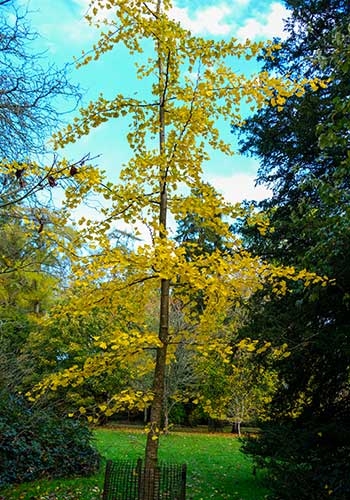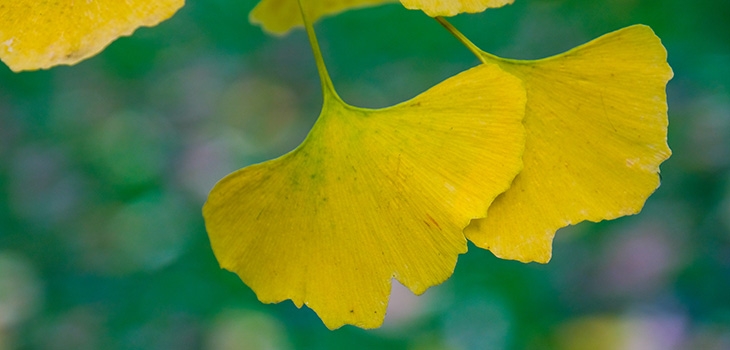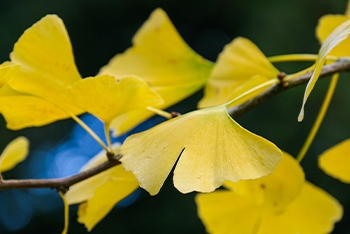Tree of the month: Maidenhair tree - Ginkgo biloba

This tree with an ancient origin produces a spectacular ephemeral autumn display as its unique, fan-shaped leaves transform a dazzling shade of gold. Spotting this phenomenon at its height can prove challenging though- the tree is notorious for dropping all its leaves abruptly. However, the resulting luminous carpet of fallen leaves is itself a beautiful sight.
The species was named Ginkgo by the Swedish biologist Carl Linnaeus, who took it from its Japanese name which translates as ‘silver-apricot’, in reference to the fruits found on female trees (ginkgos are famously dioecious, with male and female individuals). We don’t have any fruiting trees here at Westonbirt, which is perhaps lucky as the smell of the squashed fruits has been likened to dog poo and vomit.
The specific epithet biloba references the shape of the tree’s leaves, meaning ‘two-lobed’, although unlobed leaves are easily found. The common name, maidenhair tree, also derives from the shape of the leaves which resemble the foliage of the fern Adiantum, with which it shares this common name.
Not only is this beautiful tree a key part of the Westonbirt landscape, but it is also important in our understanding of tree evolution. Maidenhair trees were growing on earth before dinosaurs came into existence and though ‘broad-leaved’, are gymnosperms and more closely related to conifers. Due to its considerably ancient origin, this tree is known as a ‘living fossil’ and is the only remaining species within the ancient family Ginkgoaceae.

Our Tree Spotter's Guide, available at the Westonbirt Shop, features everything you need to know about this fascinating tree. With this guide in hand, you'll be able to spot ginkgo trees with ease and discover their hidden secrets.
Purchase your Tree Spotter's Guide on your next visit and embark on a ginkgo adventure at Westonbirt Arboretum!
